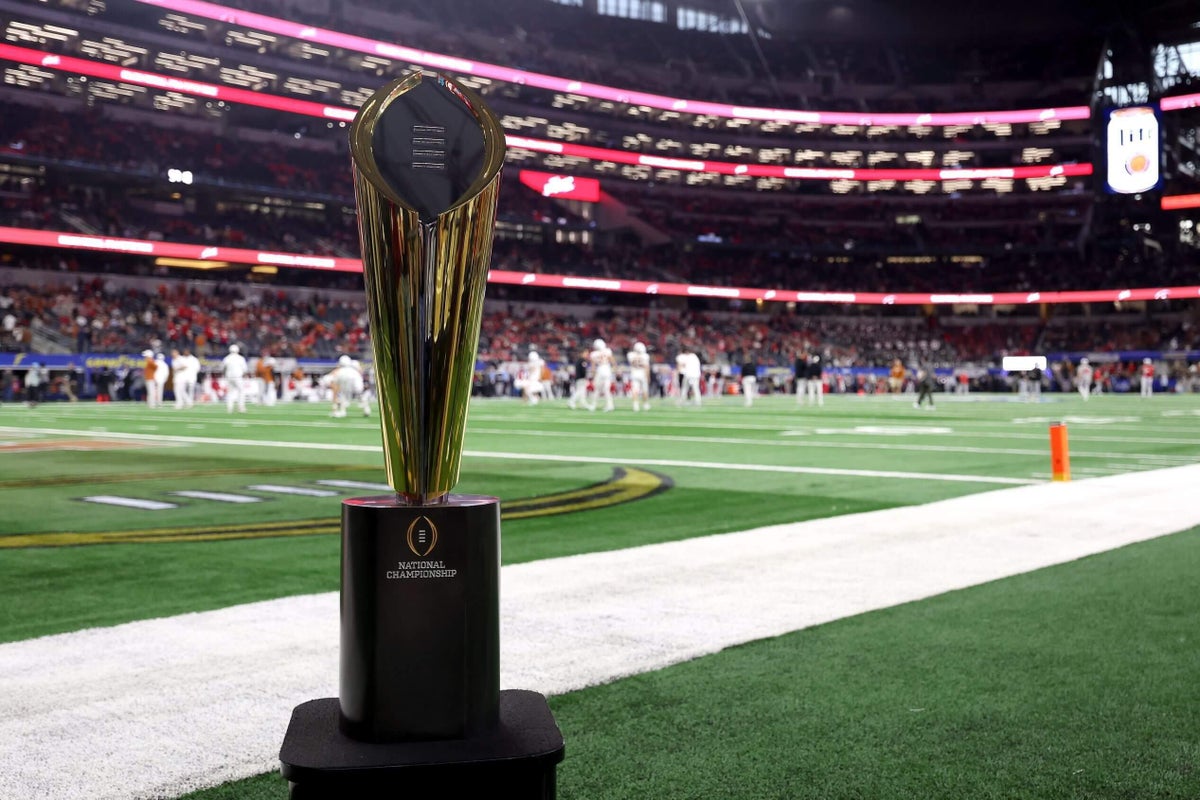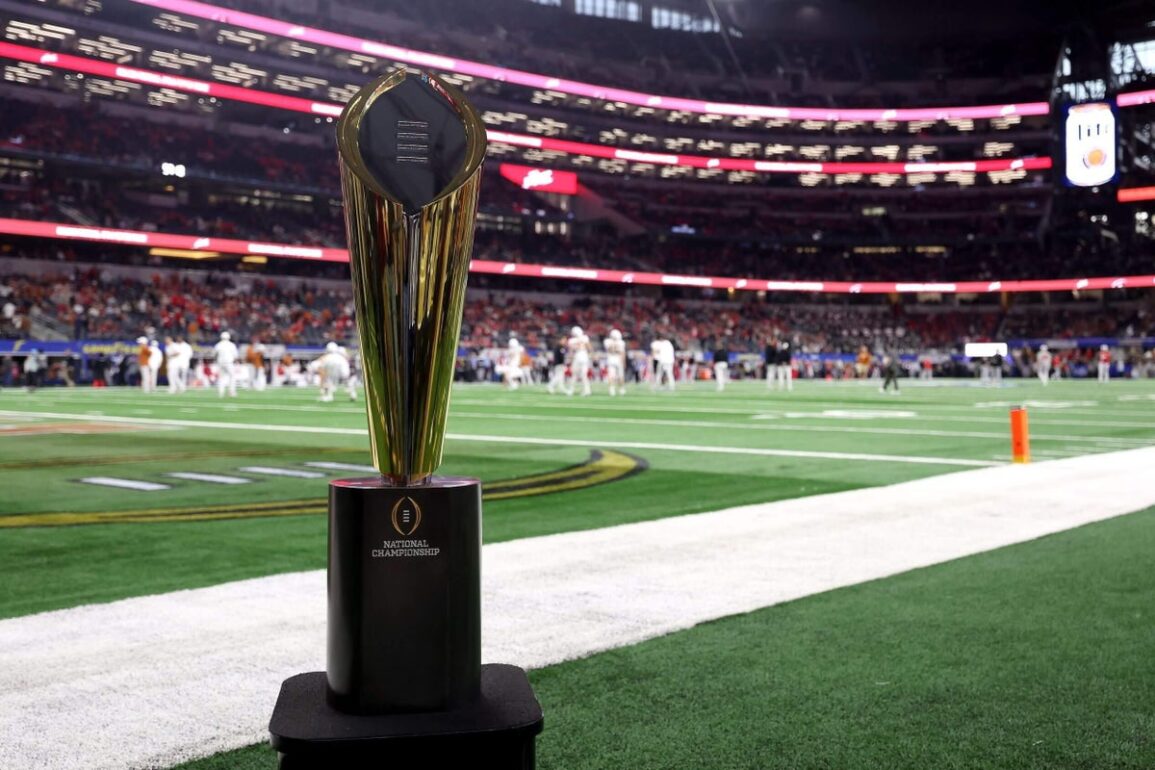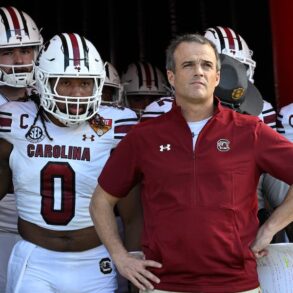
ASHEVILLE, N.C. — The College Football Playoff staff recommended updating the strength of schedule metrics used in the selection process and hopes to have a new Playoff format in place by the fall.
But talks this week reached a reset on what that format will be for 2026 and beyond.
“I wouldn’t say there’s a leading contender right now for them, but they’re taking a good look and a fresh look at it,” CFP executive director Rich Clark said Wednesday.
Advertisement
The CFP management committee, composed of 10 FBS conference commissioners and Notre Dame’s athletic director, met twice over two days at a resort hotel overlooking the Blue Ridge Mountains in northwest North Carolina.
After the full group was done, the Power 4 commissioners met on their own to further discuss the direction of a playoff format for 2026-31.
Though expansion from 12 teams seems likely in the next iteration of the Playoff, Clark made a point to say nothing is off the table.
“The format could be a lot different in ’26 or it may be the same,” Clark said Wednesday.
How best to pick the teams seems up for debate more so than the number of teams in the field.
The Big Ten’s long-supported plan to populate the field with automatic qualifiers — determined by league standings and play-in games — hit a roadblock when the Big 12 proposed a 16-team bracket with 11 at-large bids. The 5+11 model caught the attention of SEC coaches and administrators and sent CFP officials pivoting to examine the selection process.
Clark said CFP staff met with data provider SportSource Analytics and some outside sources, including a mathematician from Google, to examine the statistics they provide the committee — with a focus on strength of schedule.
“Because some of these metrics were, I’d say, put into place with a whole different look in the way college football was laid out, with the way conferences were structured and things like that,” Clark said. “So you have to step back and go, OK, how are we structured now? And look at it from that lens. I wouldn’t say it’s dramatic, but it’s a refresh.”
Clark said staff also met with athletic directors who served on the committee last year to talk about process.
The CFP is still committed to using a committee to select the teams, despite some skepticism — especially in the Big Ten — about whether a subjective process is the best way to compare and contrast teams that play vastly different schedules.
Advertisement
“There were no real discussions about changing priorities,” Clark said. “We’re looking at them and making sure we’re viewing them through the right lens given where college football is today.”
Clark said there is still time for discussion before a decision needs to be made. A firm deadline is Dec. 1, when TV partner ESPN needs to be notified. But Playoff leaders would like to be done well before that.
“By the fall, though, we want to have a decision,” Clark said. “That’s the preference for all of us so that we can get things put into place and the conference can make some decisions based on what the format is going to be.”
Clark cautioned, though, that the decision would likely be for six years, and “rushing to a bad decision is not in any of our best interests.”
For 2025, the 12-team CFP bracket introduced last year will still be in effect, but with a tweak to the way teams are seeded, no longer reserving byes for the top four conference champions.
Changes to the CFP format no longer need unanimous approval from the 11-member management committee. The SEC and Big Ten can shape the future without consensus from the group, but there remains some question about just how much power those conferences have to push through a format that has no support from the rest of the group. And whether it is advisable to do so.
“They’re obligated to come to an agreement on what the format is,” Clark said. “So they’ll determine that between the parties, and then go forward from there.”
Further complicating the CFP discussions is a local issue. The Big Ten is leery about signing off on a format heavy on at-large bids while the SEC — and the ACC — both play eight-game conference schedules. Big Ten (and Big 12) teams play nine conference games annually, and leaders in the conference believe those extra guaranteed losses can work against their teams in a race for at-large bids.
Advertisement
The SEC is still wavering on expanding from eight conference games to nine. Again, it comes down to being wary that their already rigorous schedules won’t be properly rewarded in the selection process.
The SEC put three teams in the 12-team CFP last year, with Alabama, Mississippi and South Carolina all just on the outside in the selection committee’s final ranking.
The Big Ten’s push for multiple automatic qualifiers from each power conference would substantially minimize the selection committee’s role to mostly just seeding. The Big 12 and ACC have pushed back on a plan to reserve two playoff spots each for them and four each for the Big Ten and SEC.
Five months of minimal progress led everybody back to the drawing board, looking for new solutions, but the management committee did come to some other decisions.
The commissioners approved player availability reports for Playoff games that will mimic what the Big Ten and SEC use during the regular season, Clark said.
The commissioners also approved instituting sports wagering monitoring beginning next season.
“How we do it is now up to the staff to really figure out what the details of that will be,” Clark said.
(Photo: Sam Hodde / Getty Images)
This post was originally published on this site be sure to check out more of their content.







